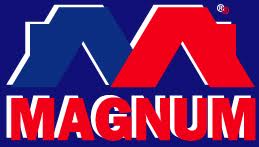LLM
Large language models (LLMs) like GPT-4, LlaMA, Falcon, Claude, Cohere, PaLM, have demonstrated immense capabilities for natural language generation, reasoning, summarization, translation, and more. However, effectively leveraging these models to build custom applications requires overcoming non-trivial machine learning engineering challenges.
LLMOps aims to provide a streamlined platform enabling development teams to efficiently integrate different LLMs into products and workflows.
In this blog, I will cover best practices and components for implementing an enterprise-grade LLMOps platform including model deployment, collaboration, monitoring, governance, and tooling using both open source and commercial LLMs.
Challenges of Building LLM-Powered Apps
First, let’s examine some key challenges that an LLMOps platform aims to tackle:
- Model evaluation — Rigorously benchmarking different LLMs for accuracy, speed, cost, and capabilities
- Infrastructure complexity — Serving and scaling LLMs in production with high concurrency
- Monitoring and debugging — Observability into model behavior and predictions
- Integration overhead — Inferfacing LLMs with surrounding logic and data pipelines
- Collaboration — Enabling teams to collectively build on models
- Compliance — Adhering to regulations around data privacy, geography, and AI ethics
- Access control — Managing model authorization and protecting IP
- Vendor lock-in — Avoiding over-dependence on individual providers
An LLMOps platform encapsulates this complexity allowing developers to focus on their custom application logic.
Next, let’s explore a high-level architecture.
LLMOps Platform Architecture
An LLMOps platform architecture consists of these core components:
Experimentation Sandbox
Notebook environments for safely evaluating LLMs like GPT-4, LlaMA, Falcon, Claude, Cohere, PaLM on proprietary datasets.
Model Registry
Catalog of LLMs with capabilities, performance, and integration details.
Model Serving
Scalable serverless or containerized deployment of LLMs for production.
Workflow Orchestration
Chaining LLMs together into coherent workflows and pipelines.
Monitoring and Observability
Tracking key model performance metrics, drift, errors, and alerts.
Access Controls and Governance
Role-based access, model auditing, and oversight guardrails.
Developer Experience
SDKs, docs, dashboards, and tooling to simplify direct model integrations.
Let’s explore each area further with implementation details and open source tools.
Experimentation Sandbox
Data scientists and developers need sandbox environments to safely explore different LLMs.
This allows iterating on combinations of models, hyperparameters, prompts, and data extracts without operational constraints.
For example, leveraging tools like:
- Google Colab — Cloud-based notebook environment
- Weights & Biases — Experiment tracking and model management
- LangChain — Clean Python LLM integrations
- HuggingFace Hub — Access to thousands of open source models
Key capabilities needed include:
- Easy access to both open source and commercial LLMs
- Automated versioning of experiments
- Tracking hyperparameters, metrics, and artifacts
- ISOLATED FROM PRODUCTION SYSTEMS — Critically important for integrity
The sandbox allows freedom to innovate while seamlessly capturing complete context to productionize successful approaches.
Model Registry
The model registry serves as the system of record for vetted LLMs approved for usage in applications. It tracks:
- Model metadata — Type, description, capabilities
- Performance benchmarks — Speed, accuracy, cost
- Sample model outputs
- Training data and approach summaries
- Limits and constraints — Data types, size limits, quotas
- Integration details — Languages, SDKs, endpoints
Sorry we are experiencing system issues. Please try again.
